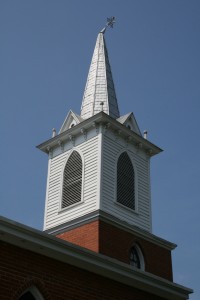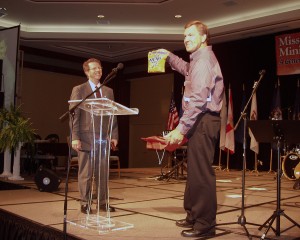By Dr. Franklin Dumond
A recent research poll from Lifeway Research suggested the average pastor’s tenure in a local church is 3.6 years (See Dennis Cook, July 18, 2011). Other studies and informal polls suggest the average or typical tenure may be a bit longer, while studies of effective leaders suggest an average tenure of 11.2 to 21.6 years. Trevin Wax suggests that most studies of the average tenure in a local church show the number to be between 5 and 7 years.
A survey of General Baptist pastors suggests the average pastoral tenure of those currently serving a church is 8.82 years. This number comes from reports submitted by 107 pastors in response to a survey mailed to approximately 700 General Baptist pastors. Bivocational pastors who responded indicated an average tenure of 7.77 years while fully funded pastors indicated a current tenure of 10.79 years. The report only measured length of service in the current ministry setting rather than average length of stay in several ministry settings.
A similar poll of Cooperative Baptists in South Carolina found an average tenure of 9 years while Barna Research reported that mainline congregations are served by the same pastor for only about 4 years.
Noted researcher and church consultant Lyle Schaller pointed out years ago that while longer tenure does not guarantee church growth, shorter pastoral tenure almost always insures lack of growth.
In an ironic twist on the numbers Gary McIntosh suggests in a blog post from June 14, 2013 that long pastoral tenure may hurt a church. His observation, based on several interviews with pastors who stayed for 25 years or more, was summarized as “The first ten years were great; the second ten years were good; I should have left in year twenty!”
This cycle is rather normal, since pastors come with a vision for the future but over time there is a natural tendency to focus more on the relationships within the church rather than those outside it. Further, pastors come to a church with a briefcase full of ideas but over time these ideas may run their course. Thus a wise pastor must reinvent himself every 7-10 years to remain effective in his leadership.
 Looking back on nearly 60 years of ministry Rev. James Trotter remarked “I left some of my pastorates too soon.”
Looking back on nearly 60 years of ministry Rev. James Trotter remarked “I left some of my pastorates too soon.”
At age 95 Rev. Leonard Donoho passed along the same advice given to him when he started ministry in 1943 “I was a young minister in the association and had some good brothers to advise and guide me in my ministry. The best was to ‘stay in there and preach the Word.’”
Are there keys to staying in there? Cecil Robertson, looking back over nearly 70 years of ministry, indentifies perhaps one important key to staying in there when he says “I love people because God does.” In addition to this love for people there must also be a love for the task as he goes on to say, “I love preaching, seeing souls saved, and all that goes with ministry.”
James Black, with more than 60 years in ministry, remarked about starting over again, “My goal would be to have longer pastorates.” To accomplish that he suggests, “I would rearrange my priorities. My priorities were God first, then ministry, then family. If I could go back, my priorities would be God first, family next, then ministry.”


